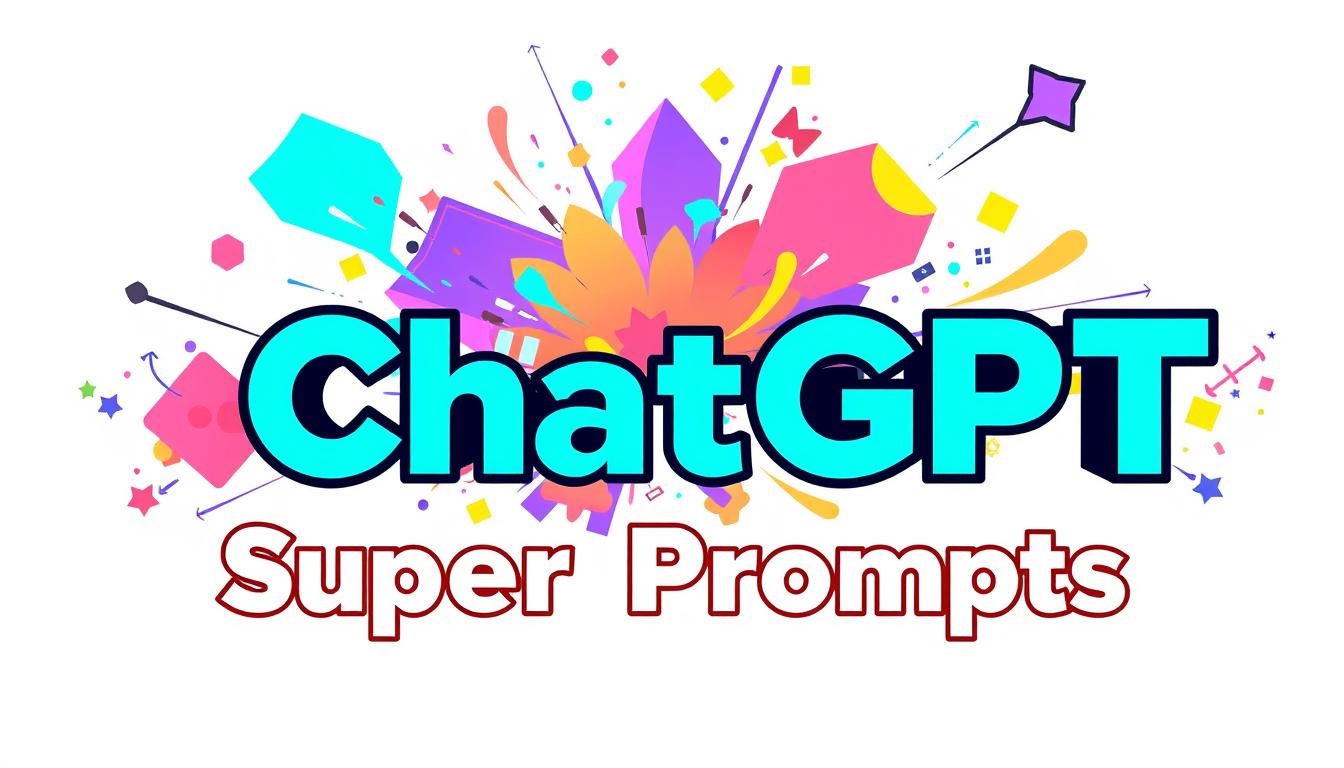Creating effective instructions for AI tools can make a big difference in the results you get. Detailed prompts help the AI understand exactly what you need, leading to more accurate and useful responses. Whether you’re working on content creation, marketing, or coding, mastering this skill can save time and improve outcomes.
AI language models rely on clear and precise instructions. Basic queries often lead to generic answers, while optimized prompts can unlock the tool’s full potential. This process, known as prompt engineering, is becoming essential for professionals across industries.
It’s important to remember that these models are trained on data up to late 2021. Responses after this date may include estimations. Always double-check the information provided to ensure accuracy. With the right strategies, you can craft prompts that deliver the best possible results.
In this article, we’ll explore a 5-step framework to help you write better prompts. These tips will guide you in creating clear, specific, and effective instructions for your AI projects.
Key Takeaways
- Detailed prompts lead to more accurate AI responses.
- Prompt engineering is a valuable skill for professionals.
- AI models have training limitations up to late 2021.
- Always verify the information provided by AI tools.
- A 5-step framework can help improve your prompt writing.
Introduction to ChatGPT Prompts
Many users approach AI tools as if they were search engines, but this often leads to generic results. A recent study found that 74% of users treat these tools like Google, typing in basic queries and expecting detailed answers. However, this approach rarely delivers the content or insights professionals need for their business or product strategies.
For example, asking “Write about SEO” might give you a broad overview, but it won’t help you create actionable content. A better prompt would be, “Create 10 SEO-optimized blog titles for vegan skincare products.” This specificity helps the AI understand your exact needs, saving you time and improving the quality of the output.

Despite its capabilities, AI has limitations. It often lacks citations, and its responses may include inaccuracies, especially for topics after late 2021. This is why professionals across industries are adopting a more structured approach to prompt creation. For instance, SEO experts on the Warrior Forum have shared how they use spreadsheets to organize and refine their prompts for better results.
Here’s why a structured approach matters:
- It reduces the risk of generic or irrelevant responses.
- It ensures the AI understands your goals and context.
- It helps you get the most out of your experience with AI tools.
By treating AI as more than just a search engine, you can unlock its full potential and achieve better outcomes for your projects.
Understanding the Basics of Prompt Engineering
The way you frame your input directly impacts the AI’s ability to deliver useful results. This process, known as prompt engineering, involves designing strategic instructions to guide the machine’s output. Studies show that well-crafted prompts can increase response accuracy by up to 63%.

What is Prompt Engineering?
Prompt engineering is the art of creating detailed and structured inputs to achieve specific outputs. It’s not just about asking questions but about providing context, tone, and clear objectives. For example, a vague prompt like “Write code” will yield generic results. A better approach is, “Write a Python script for web scraping using BeautifulSoup.”
This level of detail helps the AI understand your intent, reducing the cognitive load and improving the quality of the response. Tokenization, the process of breaking down text into smaller units, plays a key role here. The more precise your input, the better the machine can process and generate relevant output.
Why Detail Matters in Prompts
Detailed prompts ensure the AI understands your goals and context. For instance, a marketer might use a spreadsheet to organize prompts like, “Create 10 blog titles for vegan skincare products targeting millennials.” This specificity leads to actionable and tailored results.
Here’s a comparison of vague vs. detailed prompts:
| Vague Prompt | Detailed Prompt |
|---|---|
| Write about SEO | Write a 500-word blog post on SEO strategies for small businesses in 2023 |
| Explain AGI | Explain the concept of Artificial General Intelligence (AGI) and its potential applications in healthcare |
By mastering these skills, you can unlock the full potential of AI tools and achieve better outcomes for your projects.
Step 1: Define Your Objective Clearly
Crafting clear objectives is the foundation of effective AI interactions. Without a well-defined goal, even the most advanced tools can produce vague or irrelevant results. Start by asking yourself: What exactly do I want to achieve? This simple question can guide your entire process.
Using SMART strategies ensures clarity. SMART stands for Specific, Measurable, Achievable, Relevant, and Time-bound. For instance, instead of saying, “Help me write an email,” try, “Draft a 200-word formal complaint to Amazon about delayed delivery.” This specificity helps the AI understand your intent and deliver actionable results.

Here’s an example of a well-defined objective for content creators: “Write a 500-word blog post about social media calendars for e-commerce businesses.” This includes the format, length, and topic, making it easier for the AI to generate relevant content.
For technical tasks, clarity is equally important. A coding objective like, “Debug Python code for login authentication,” provides the AI with a specific problem to solve. Similarly, clarifying your role ensures tailored responses. For example, “Act as an experienced nutritionist creating a meal plan for weight loss.”
SEO professionals often use spreadsheets to organize their objectives. This approach helps them conduct research upfront and refine their goals. By answering key questions like, “Who is my audience?” and “What is the desired outcome?” you can create prompts that unlock the AI’s full potential.
In summary, a detailed plan and clear objectives are the first steps to success. They eliminate guesswork, improve efficiency, and ensure the AI delivers results that meet your needs.
Step 2: Choose the Right Format for Your Prompt
The structure of your input plays a crucial role in shaping the AI’s output. Whether you use a question or a command can determine the quality of the response. Studies show that command-style prompts yield 40% more actionable results.

When to Use Questions vs. Commands
Questions are great for exploratory tasks. For example, “What are the benefits of TikTok?” This format works when you’re gathering information. However, commands are more effective for specific tasks. A prompt like, “Write a 500-word blog post explaining TikTok’s brand awareness benefits,” delivers a focused and actionable result.
In technical scenarios, the difference is even clearer. Asking, “How does CSS work?” might give you a broad overview. But a command like, “Create a responsive navbar using CSS Grid,” provides a direct and usable solution.
Here’s a comparison of question and command formats:
| Question Format | Command Format |
|---|---|
| Explain the benefits of social media | List 5 benefits of social media for small businesses |
| How do I write a screenplay? | Write a 3-minute screenplay about a detective solving a mystery |
| What is Python used for? | Write a Python script to automate data entry |
For complex requests, scenario-based formatting works best. For instance, “Act as a web developer and create a landing page for a fitness app.” This approach provides context and ensures the AI understands your needs.
Choosing the right format ensures your text is clear and actionable. Whether you’re writing a blog post, debugging code, or crafting a screenplay, the structure of your prompt matters.
Step 3: Set the Tone and Style
Setting the right tone and style in your instructions can significantly influence the AI’s output. Whether you’re crafting content for a brand or writing a technical document, the tone you choose matters. Studies show that 68% of branded content requires tone adjustments post-generation, highlighting the importance of getting it right from the start.

Formal vs. Informal Tone
The tone you use depends on your audience and purpose. A formal tone works well for legal documents or academic inquiries. For example, “Draft a formal complaint letter regarding a delayed shipment” sets a professional tone. On the other hand, an informal tone is ideal for social media posts or casual blogs. A prompt like, “Write a fun and engaging Instagram caption for a new skincare product,” creates a relaxed vibe.
Here’s how tone impacts different scenarios:
- Marketing: A casual tone can boost engagement on social media, while a formal tone builds trust in white papers.
- Art: Creative projects often benefit from an informal and playful tone.
- Industry: Technical guides require a clear and precise tone to ensure accuracy.
Aligning tone with your audience is crucial. A technical white paper for experts should differ from a beginner’s guide. For instance, “Explain blockchain technology for a non-technical audience” ensures the AI tailors its response to the right user level.
Tone Modifiers and Examples
Using tone modifiers can help the AI understand your desired style. Here’s a table of examples:
| Tone Modifier | Example Prompt |
|---|---|
| Formal | Write a professional email requesting a meeting with a client. |
| Informal | Create a casual blog post about the benefits of yoga. |
| Technical | Explain the process of data encryption in simple terms. |
| Creative | Write a short story about a detective solving a mystery. |
By mastering tone and style, you can create prompts that resonate with your audience and achieve your goals. For more inspiration, check out these mind-blowing prompts to elevate your AI interactions.
Step 4: Provide Context and Background Information
Providing context in your instructions ensures the AI delivers tailored and accurate results. Context-rich prompts reduce editing time by 33%, making them a valuable tool for professionals. Whether you’re analyzing market trends or debugging code, the right background information can make all the difference.

How Much Context is Enough?
Context layering is a technique that adds depth to your prompts. For example, instead of saying, “Analyze metrics,” specify, “Analyze Shopify conversion metrics for Q2 2024 outdoor gear sales.” This level of detail helps the AI understand your goals and deliver actionable insights.
In research-driven tasks, context is equally important. A prompt like, “Conduct market research on vegan skincare products targeting millennials,” provides clear direction. Similarly, in coding, “Add error handling to a Python API call script” ensures the AI focuses on the right task.
Here’s a comparison of vague vs. context-rich prompts:
| Vague Prompt | Context-Rich Prompt |
|---|---|
| Analyze metrics | Analyze Shopify conversion metrics for Q2 2024 outdoor gear sales |
| Conduct research | Conduct market research on vegan skincare products targeting millennials |
| Add error handling | Add error handling to a Python API call script |
Industry-specific context is also crucial. For example, SEO professionals often use spreadsheets to organize context fields like audience demographics and keywords. This approach ensures the AI generates content that aligns with their company’s goals.
By providing the right background information, you can unlock the AI’s full potential and achieve better outcomes for your projects.
Step 5: Refine and Iterate Your Prompts
Refining your prompts is a critical step to ensure the AI delivers precise and actionable results. Even the best initial instructions can benefit from iteration. This process helps eliminate errors, improve clarity, and achieve better output.

Common Mistakes to Avoid
When refining prompts, watch out for these top errors:
- Ambiguity (41%): Vague instructions lead to unclear results. For example, “Write about marketing” is too broad. Instead, try, “Write a 300-word blog post on digital marketing trends for 2024.”
- Overcomplication (33%): Overloading the prompt with unnecessary details can confuse the AI. Keep it simple and focused.
- Missing Context (26%): Without background information, the AI may produce irrelevant responses. Always include relevant details like audience or purpose.
Balancing Specificity with Flexibility
While specificity is key, too much rigidity can limit creativity. For example, “Write a 500-word article on AI in healthcare” is specific but allows the AI to explore ideas. Avoid overly restrictive prompts like, “Write exactly 500 words on AI in healthcare with three subheadings.”
Before and After Examples
Here’s how refining a prompt can improve results:
| Before | After |
|---|---|
| Explain marketing | Explain inbound marketing strategies for small businesses in 2024 |
| Write code | Write a Python script to automate email reminders |
Fact-Checking and Response Analysis
Always verify the AI’s output for accuracy, especially for time-sensitive topics. Use tools like Google Scholar or industry reports to cross-check information. Analyzing responses helps identify areas for further refinement.
Editing Checklist
Before finalizing your prompt, ensure it meets these criteria:
- Clarity: Is the instruction easy to understand?
- Context: Does it include necessary background information?
- Format: Is the structure appropriate for the task?
- Tone: Does it match the desired style?
By following these tips, you can refine your prompts effectively and save time in the long run. Iteration is the key to unlocking the AI’s full potential and achieving the best results for your tasks.
ChatGPT Super Prompts: Unlocking Advanced Results
Unlocking the full potential of AI requires more than just basic instructions. By using advanced techniques, you can achieve more precise and actionable results. These methods, often referred to as super prompts, involve multi-layered instruction sets that guide the AI to deliver highly tailored outputs.

Examples of Super Prompts
Super prompts are designed to provide detailed context and clear objectives. For instance, a technical example might involve developing a full-stack web application. A prompt like, “Create a full-stack web app for an e-commerce platform using React and Node.js,” ensures the AI understands the role of each component and delivers a comprehensive solution.
In marketing, super prompts can be used to develop integrated campaigns. For example, “Design a 30-day social media campaign for a new fitness app targeting millennials,” provides the AI with a clear plan and audience focus. This approach ensures the output aligns with your strategies and goals.
Screenplay development is another area where super prompts shine. A prompt like, “Write a 10-minute screenplay about a detective solving a cybercrime,” includes specific parameters that guide the AI to create a structured and engaging narrative.
Parameter Stacking Techniques
Parameter stacking involves adding multiple layers of instructions to refine the AI’s output. For example, “Act as an expert nutritionist and create a 7-day meal plan for weight loss, including calorie counts and macronutrient breakdowns,” provides the AI with a clear role and detailed requirements.
This technique is particularly useful for complex tasks. By stacking parameters, you ensure the AI understands the context and delivers results that meet your needs. Libraries like the “God of Prompt” catalog over 500 examples of such prompts, offering a wealth of inspiration for various industries.
AI Certification and Advanced Frameworks
For those looking to master these techniques, AI certification programs offer structured training. These programs teach advanced frameworks, such as the “Act as expert” approach, which helps users create prompts that mimic professional expertise. This method is especially useful for technical fields like web development or scientific research.
Here’s a comparison of basic vs. super prompts:
| Basic Prompt | Super Prompt |
|---|---|
| Write about AI | Explain the ethical implications of AI in healthcare, focusing on patient privacy |
| Create a marketing plan | Develop a 6-month marketing plan for a vegan skincare brand targeting Gen Z |
| Debug code | Debug a Python script for a machine learning model, focusing on data preprocessing |
By adopting these advanced strategies, you can unlock the full potential of AI tools and achieve better outcomes for your projects. Whether you’re working on a web application, a marketing campaign, or a creative screenplay, super prompts can elevate your results to the next level.
Practical Applications of ChatGPT Prompts
AI tools can transform how businesses and creators approach tasks, especially when used strategically. From generating content to optimizing marketing campaigns, these tools offer practical solutions for various industries. By leveraging detailed prompts, professionals can save time and achieve better results.

Content Creation
Creating high-quality content is easier with AI. For example, you can generate SEO-optimized blog posts or build content clusters around specific topics. A prompt like, “Create a content cluster for vegan skincare products targeting millennials,” helps the AI produce relevant and structured outputs.
Email sequences are another area where AI shines. A prompt such as, “Develop a 5-part email sequence for a new product launch,” ensures the AI crafts engaging and actionable emails. This approach is particularly useful for businesses looking to streamline their communication strategies.
Social media calendars can also be automated. A prompt like, “Build a 30-day social media calendar for a fitness brand,” provides a clear plan for consistent posting. This saves time and ensures your website or platform stays active and engaging.
Marketing and SEO
AI tools are invaluable for marketing and SEO strategies. For instance, you can use prompts to analyze backlink building strategies. A detailed prompt like, “Analyze backlink opportunities for a travel blog,” helps the AI identify high-value links.
PPC ad copy optimization is another practical application. A prompt such as, “Write 5 variations of PPC ad copy for a tech gadget,” ensures the AI generates compelling and conversion-focused ads. This is especially useful for businesses running paid campaigns.
Here’s a comparison of prompts for different marketing tasks:
| Task | Prompt Example |
|---|---|
| SEO Content | Write a 500-word blog post on SEO trends for 2024 |
| Email Sequence | Develop a 5-part email sequence for a new product launch |
| Social Media | Build a 30-day social media calendar for a fitness brand |
| Backlink Strategy | Analyze backlink opportunities for a travel blog |
| PPC Ad Copy | Write 5 variations of PPC ad copy for a tech gadget |
By using these practical applications, you can unlock the full potential of AI tools and achieve better outcomes for your business or creative projects.
Tools and Resources for Prompt Engineering
Having the right tools and resources can significantly enhance your prompt engineering process. Whether you’re a beginner or an expert, leveraging these assets can save time and improve the quality of your outputs. From templates to browser extensions, there’s a wide range of options to explore.

Prompt Generators and Templates
Prompt generators are a great starting point for creating effective instructions. Platforms like the “Prompt God” library offer over 500 templates for various industries. These templates provide a structured approach, ensuring your prompts are clear and actionable.
For example, SEO professionals often use spreadsheets to organize their prompts. A user on the Warrior Forum shared a spreadsheet with 120+ templates, making it easier to manage and refine their tasks. This method ensures consistency and efficiency in prompt creation.
Browser Extensions and Version Control
Browser extensions can streamline your workflow by integrating prompt management directly into your browser. These tools allow you to save, organize, and reuse prompts effortlessly. Additionally, version control systems like Git can help you track changes and iterate on your prompts over time.
For technical users, repositories like GitHub offer code snippets and examples for prompt engineering. These resources are invaluable for debugging and optimizing your prompts for specific tasks.
Certification and Advanced Resources
For those looking to deepen their knowledge, AI certification programs provide structured training in prompt engineering. These programs teach advanced frameworks, such as the “Act as expert” approach, which helps users create prompts that mimic professional expertise.
Here’s a quick list of resources to get started:
- Prompt God template library
- Browser extensions for prompt management
- Version control systems like Git
- Code snippet repositories on GitHub
- AI certification programs
By leveraging these tools and resources, you can elevate your prompt engineering skills and achieve better results. Whether you’re working on text generation, code debugging, or creative projects, these assets provide the support you need to succeed.
Common Challenges and How to Overcome Them
Navigating the challenges of AI interactions can significantly improve the quality of your results. One of the most common issues users face is dealing with inaccurate responses. According to a recent survey, 58% of users struggle with factual accuracy. This section will explore practical strategies to address this problem and ensure reliable outputs.

Fact-Checking Workflow
Establishing a fact-checking workflow is essential for verifying AI-generated content. Start by cross-referencing the information with trusted sources like Google Scholar or industry reports. For example, if the AI provides statistics, verify them against recent studies or official databases.
Here’s a simple workflow to follow:
- Identify key claims in the AI’s response.
- Use reliable sources to validate each claim.
- Document any discrepancies and refine your prompts accordingly.
Timestamp Limitations
AI models are trained on data up to late 2021, which can lead to outdated outputs. To work around this, specify the time frame in your prompts. For instance, instead of asking, “What are the latest SEO trends?” try, “What are the SEO trends for 2024?” This ensures the AI focuses on the most relevant information.
Layered Verification Prompts
Using layered verification prompts can improve accuracy. For example, after receiving an initial response, ask follow-up questions like, “Can you provide sources for this data?” or “Is this applicable to current industry standards?” This approach encourages the AI to refine its output and provide more reliable results.
Medical vs. Technical Accuracy
Accuracy requirements vary by industry. In medical contexts, precision is critical, and even minor errors can have serious consequences. For technical tasks, focus on clarity and functionality. Tailor your prompts to the specific needs of your field to achieve the best experience.
Industry-Specific Benchmarks
Different industries have unique accuracy benchmarks. For example, legal professionals require citations for every claim, while marketers prioritize actionable insights. Understanding these benchmarks helps you craft prompts that meet your industry’s standards.
By addressing these challenges, you can enhance the reliability of AI-generated content and achieve better results for your projects.
Future Trends in Prompt Engineering
The future of prompt engineering is evolving rapidly, driven by advancements in AI and regulatory changes. As AI tools become more sophisticated, the way we interact with them is also transforming. This section explores emerging trends that are shaping the industry and how they can enhance your skills.

Auto-Prompt Generation Systems
Auto-prompt generation systems are gaining traction. These tools use machine learning to create optimized prompts based on user inputs. For example, a marketing professional could input a goal like “increase brand awareness,” and the system would generate tailored prompts for social media campaigns. This innovation saves time and improves efficiency.
Ethical AI Certification Programs
As AI becomes more integrated into daily workflows, ethical considerations are taking center stage. Certification programs are emerging to ensure compliance with standards like the EU AI Act. These programs teach users how to design prompts that align with ethical guidelines, fostering trust and accountability.
Industry-Specific Prompt Marketplaces
Specialized prompt marketplaces are on the rise. These platforms cater to specific industries, offering pre-designed prompts for tasks like medical research or legal analysis. For instance, a healthcare professional could find prompts tailored to patient data analysis, ensuring accuracy and relevance.
Multimodal Prompt Engineering
Multimodal prompts, which combine text, images, and audio, are becoming more common. This approach is particularly useful in creative fields like art and design. For example, a designer could use a multimodal prompt to generate visual concepts based on textual descriptions, streamlining the creative process.
AI-Assisted Prompt Optimization
AI tools are now helping users refine their prompts. These systems analyze the effectiveness of prompts and suggest improvements. For instance, a developer could input a coding prompt, and the AI would recommend ways to make it more precise, enhancing the quality of the output.
Regulatory Impacts on Prompt Design
Regulations like the EU AI Act are influencing prompt engineering. These laws require transparency and accountability in AI interactions. As a result, prompts must be designed to ensure compliance, which adds a new layer of complexity to the process.
| Trend | Application |
|---|---|
| Auto-Prompt Generation | Marketing campaigns, content creation |
| Ethical Certification | Compliance with AI regulations |
| Industry Marketplaces | Healthcare, legal, and technical tasks |
| Multimodal Prompts | Creative design and visual projects |
| AI-Assisted Optimization | Refining prompts for better results |
| Regulatory Compliance | Ensuring transparency in AI interactions |
By staying ahead of these trends, you can leverage the full potential of AI tools and enhance your strategies. Whether you’re in marketing, healthcare, or creative fields, understanding these developments will give you a competitive edge.
Conclusion
Mastering the art of crafting detailed instructions unlocks significant productivity gains, with optimized inputs boosting efficiency by 47%. By following the 5-step framework—defining objectives, choosing the right format, setting tone, providing context, and refining prompts—you can achieve better results in less time.
Continuous learning is key to staying ahead in this evolving field. Emerging AI certification programs offer structured training to enhance your experience and skills. Experimenting with template libraries and tools can also spark new ideas and streamline your workflow.
The ROI of prompt optimization is clear: improved accuracy, efficiency, and tailored outputs. Start exploring resources like prompt generators and version control systems to elevate your plan. With practice and the right tips, you can master this skill and unlock the full potential of AI tools.

